rPET-Bottle – Petrochemicals – Sorting 19-12-202 - Arhive
rPET-Bottle – Petrochemicals – Sorting
rPET Bottle – Petrochemicals – Naphtha
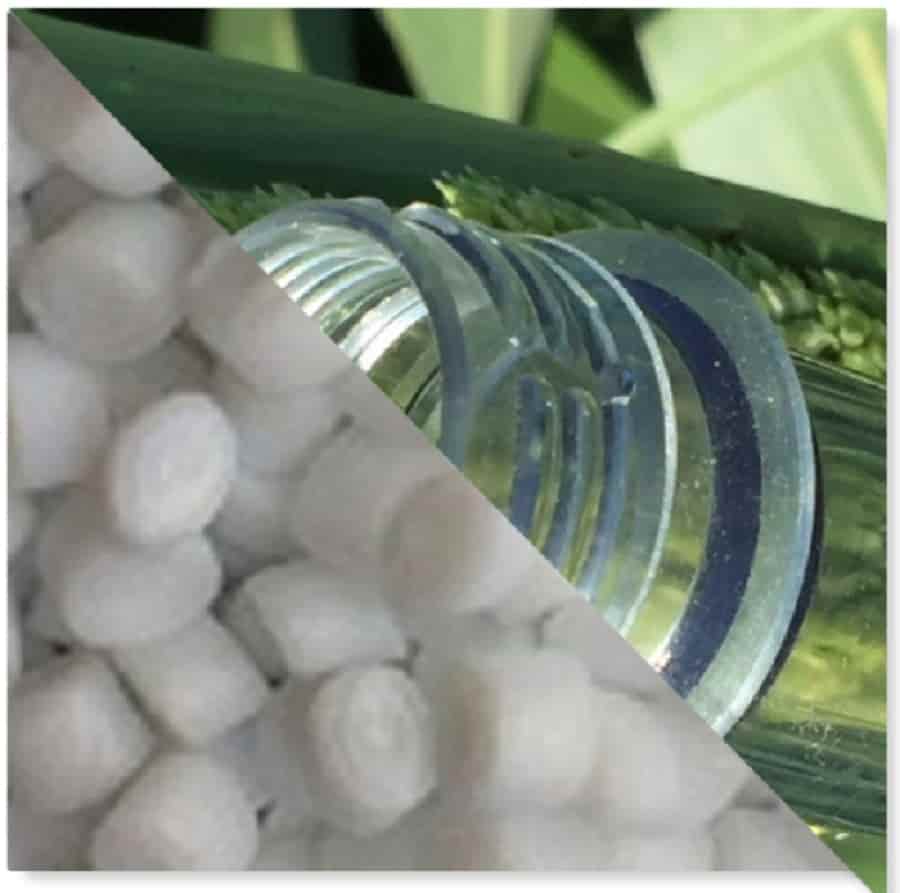
Crude Oil Prices Trend
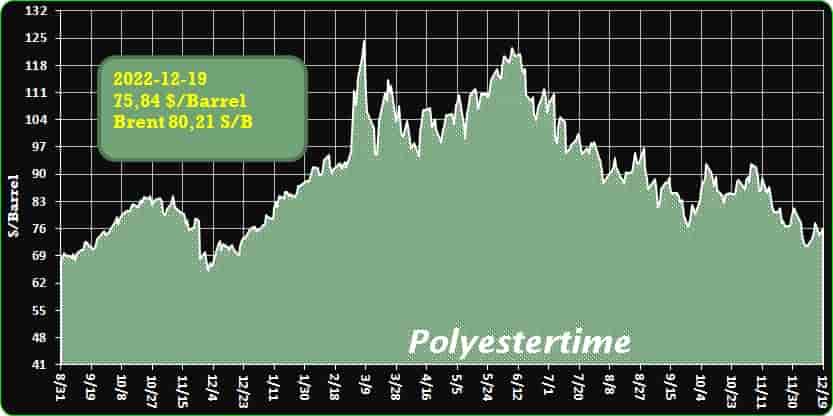
Crude Oil Prices Trend
-Freepoint Eco-Systems breaks ground on plastic recycling facility in Ohio
The 260,000-square-foot facility is expected to begin operations in the first half of 2024.
Freepoint Eco-Systems LLC has broken ground on its first commercial-scale advanced plastics recycling facility, located in Hebron, Ohio.
The Houston-based company says the new facility, which received International Sustainability and Carbon Certification (ISCC Plus) in April, will recycle postuse plastics otherwise destined for landfills or incineration. The plant will span 25 acres and utilize an existing 260,000-square-foot warehouse, which the company says will make it one of the largest advanced recycling facilities in the world, capable of recycling 90,000 tons of materials per year.
Freepoint uses pyrolysis technology to convert plastic scrap into feedstock that will be used to make new plastic products. As a result, the company says less plastic scrap is landfilled or incinerated, more oil is left in the ground and the process reduces greenhouse gas emissions by up to 90 percent compared to plastic made from fossil fuels.
The company says it will create 200 construction jobs in Ohio in 2023 to build the facility, as well as 70 full-time circular economy jobs once it begins commercial operations in the first half of 2024. rPET-Bottle – Petrochemicals – Sorting
“Breaking ground on Freepoint’s flagship facility in Ohio marks the next big step in expanding our advanced recycling footprint in the United States and across the globe,” Freepoint Managing Director Jeff McMahon says. “From construction to the launch of operations and beyond, the facility will have a positive impact both broadly and in the Ohio community through plastic recycling, job creation and greenhouse gas reductions. Ultimately, we are working to contribute to a more sustainable circular economy.”
Freepoint says all recycled plastic feedstock produced at the Hebron facility will be sold to Shell in connection with a long-term supply agreement the two companies signed earlier this year.
Phil Turley, general manager of plastic circularity at Shell, says “I congratulate Freepoint on reaching this exciting milestone. Shell is delighted to be working with Freepoint and to have secured a hundred percent of the pyrolysis oil offtake from the plant that will be used at our Energy and Chemicals Park Norco. The pyrolysis offtake will make a valuable contribution to Shell’s strategy to deliver more of the circular chemicals our customers demand and is a great example of the collaboration needed to grow this value chain.”
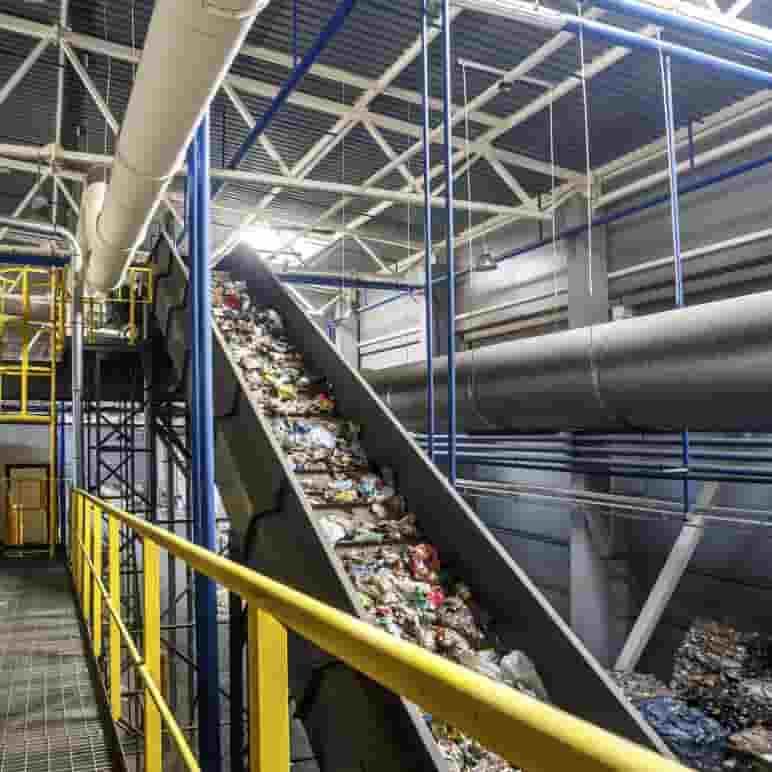
-Thyssenkrupp Uhde selected by CF Industries and Mitsui for blue ammonia project
Thyssenkrupp Uhde has been selected as technology provider for a new “Blue Ammonia” plant in the United States by Mitsui & Co., Ltd. (Mitsui), one of the leading ammonia marketers in the world, and CF Industries Holdings, Inc. (CF), the world’s largest producer of ammonia, said Hydrocarbonprocessing.
The new greenfield facility will produce blue ammonia by leveraging carbon capture and sequestration processes to reduce carbon emissions by more than 60% compared to conventional ammonia. As a first step, thyssenkrupp Uhde will conduct a front-end engineering and design (FEED) study for the proposed joint venture of CF and Mitsui.
The aim is to construct an export-oriented greenfield blue ammonia facility in Ascension Parish, Louisiana, USA. Demand for blue ammonia is expected to grow significantly as a decarbonized energy source, both for its hydrogen content and as a fuel or feedstock itself. CF and Mitsui had previously signed a joint development agreement that provides the framework for the FEED study. rPET-Bottle – Petrochemicals – Sorting
In addition, CF Industries acquired land during the third quarter of 2022 on the west bank of Ascension Parish, Louisiana, on which the proposed facility would be constructed should the companies agree to move forward.
CF Industries and Mitsui expect to make a final investment decision on the proposed facility in the second half of 2023. Construction and commissioning of a new world-scale capacity ammonia plant typically takes approximately 4 years.
Dr. Cord Landsmann, CEO thyssenkrupp Uhde: “We are proud to be chosen once more by our long-term customer to take another big step towards more environmental friendliness. The market clearly moves towards clean ammonia, for energy as well as for fertilizers. Reducing emissions wherever possible is the need of the hour, and we have the solutions and the cross-industry integration competencies.”
thyssenkrupp Uhde has realized several projects for CF, and both parties can look back on decades of successful cooperation. In 2016, major ammonia and urea/UAN production units in Donaldsonville, Louisiana, were completed, and new ammonia and urea units in Port Neal, Iowa.
For both fertilizer complexes thyssenkrupp Uhde was responsible for the basic engineering, detail engineering, procurement and supply services, as well as providing services during construction and commissioning.
Climate protection made simple: emission reduction at large scale thyssenkrupp Uhde has over 100 years of experience in engineering and building of chemical plants, more than 2,500 in total. As a global technology plus EPC provider, integrating various technologies and building complete chemical complexes is part of their track record.
Among the 130 ammonia plants built are some of the largest plants worldwide, frequently setting new industry standards such as the uhde dual pressure technology. Besides the fertilizer industry, thyssenkrupp Uhde is also targeting the clean energy market with its clean ammonia technologies and is also completing the value chain by offering ammonia storage and ammonia cracking solutions being relevant for the transition towards clean energy. rPET-Bottle – Petrochemicals – Sorting
We remind, thyssenkrupp Uhde has won an order from Nippon Coke & Engineering Co., Ltd. (NCE) to build and supply a new low-emission, top-charge coke oven battery in Japan. The new battery will be installed at the Kitakyushu works as a replacement for the existing battery 2A. The design will include thyssenkrupp Uhde’s proprietary EnviBAT system to reduce emissions during the coking process.

-Stadler sorting plant at work in Japan
Multi-device system is sorting light packaging in Yokosuka, Japan.
Germany-based sorting technology provider Stadler says it has designed a facility to automatically sort light plastic packaging and LIMEX, a new limestone-based material developed and produced by Japan-based TBM Co. Ltd.
“The plant will be part of a collaboration between TBM and the city of Yokosuka to promote the collection and recycling of plastic [scrap] and LIMEX for the entire city and surrounding areas,” says Stader.
TBM and Stadler describe LIMEX as “an effective alternative to plastic and paper that can be used in the production of a wide variety of products, such as packaging, food containers, shopping bags and backlit film.” rPET-Bottle – Petrochemicals – Sorting
The recently developed material is mainly made of limestone and is claimed to have a carbon footprint up to 40 percent smaller than plastic on a life cycle basis (depending on the type of plastic) and uses less water than in paper production.
Once used, LIMEX can be recycled to produce new plastic alternative materials, according to TBM.
As part of its strategy to accelerate the use of LIMEX products, TBM commissioned Stadler to design and install the new sorting plant. The facility uses Stadler technology to separate LIMEX and plastic light packaging. The plastic sorted is recycled into pellets for use in the production of packaging, according to Stadler.
The sorting plant receives bales of light packaging made of plastic materials and LIMEX, and sorts the incoming stream into metals, polypropylene (PP), polyethylene (PE), polystyrene (PS), polyethylene terephthalate (PET) and mixed plastics (converted into refuse-derived fuel, or RDF), a two-dimensional fraction and fines.
The sorted output materials are stored in bunkers, and the PP, PE, PS, PET and mixed plastics for RDF are subsequently fed to a baler. Stadler technology used incudes a double-deck ballistic separator, 2.9-meter-wide (9.5 feet wide) high-speed conveyors and a bunker system, as well as five near-infrared (NIR) optical sorters.
“The plastic material we are processing at the plant is extremely light,” says Ursina Mutzner of Stadler. “When we ran trials with similar materials at our test center in Germany, we saw that the paddles in the double deck ballistic separator needed to be inclined more than the maximum 25 degrees the machine is designed for. So, when we designed the plant, we decided to place the ballistic separator on a slightly sloping steel structure in order to achieve the inclination of the paddles required to ensure the best sorting quality.”
Takuya Sugiyama of TBM comments, “The plant roof is quite low, so there wasn’t much space between the ballistic separator and the ceiling. At first, we thought we might have to remove part of the roof to place the machine, but Stadler’s commissioning team made the installation without any additional work. We at TBM greatly appreciate their effort.”
Takuya says he is impressed by the “European cutting-edge, beautiful design, the simple material flow and high levels of safety standards” of the system. “Every small detail is designed beautifully. Everyone who visits the plant feels the same and gives us positive comments. rPET-Bottle – Petrochemicals – Sorting
his makes us happy to have worked with Stadler.”
When developing the design, Stadler says it conducted tests in Germany and then further tested TBM’s materials at a different Stadler installation in Hyüga, Japan. Says Takuya, “We already had a good feeling about the Stadler plant, but the test gave us confidence on our decision and important evidence of what they could do for us.”
Stadler also provided training to TBM’s operators and says it will continue to support the company as the plant operates. “Our real operation has just started, so that continuous support and communication between Stadler and TBM is very important,” says Takuya.
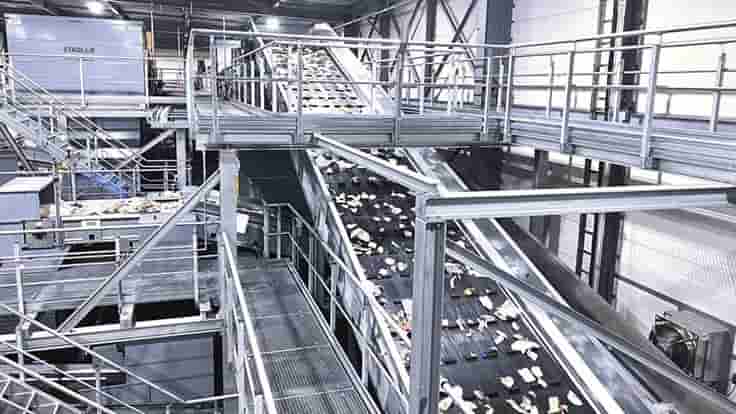
-Aramco and TotalEnergies sanction $11bn Saudi petrochemicals project
Construction to begin early next year on Amiral complex
audi Aramco and France’s TotalEnergies have made a final investment decision on an $11 billion Amiral petrochemical facility in Saudi Arabia.
The two players confirmed their FID on Thursday and said the Amiral complex will be owned, operated, and integrated with the existing Satorp refinery in Jubail on Saudi Arabia’s eastern coast.
The Saudi Aramco TotalEnergies Refining and Petrochemical Company (Satorp) is a joint venture of Saudi Aramco holding a 62.5% stake, and TotalEnergies on 37.5%.
“The petrochemical facility will enable Satorp to convert internally produced refinery off-gases and naphtha, as well as ethane and natural gasoline supplied by Aramco, into higher value chemicals, helping to advance Aramco’s liquids to chemicals strategy,” the companies said. rPET-Bottle – Petrochemicals – Sorting
The complex will include a mixed feed cracker capable of producing 1.65 million tonnes per annum of ethylene, the first in the region to be integrated with a refinery, according to a joint statement.
The facility will also include two state-of-the-art polyethylene units using advanced dual loop technology, a butadiene extraction unit, and other associated derivatives units.
An investment totalling $11 billion has been earmarked for the facility, of which $4 billion will be funded through equity by Aramco and TotalEnergies.
“Its construction is scheduled to begin during the first quarter of 2023 with commercial operation targeted to start in 2027,” the statement noted.
Middle East national oil companies are diversifying their oil and gas revenue streams while expanding their energy transition portfolios as countries in the region seek to diversify their oil-dependent economies.
Aramco chief executive Amin Nasser said the Amiral project presents an opportunity for the companies “to showcase the potential for cutting edge liquids-to-chemicals technologies that support the circular economy”.
Patrick Pouyanne, chief executive of TotalEnergies, said the complex “fits with [TotalEnergies’] strategy to expand sustainably in petrochemicals by maximising the synergies within our major platforms”.
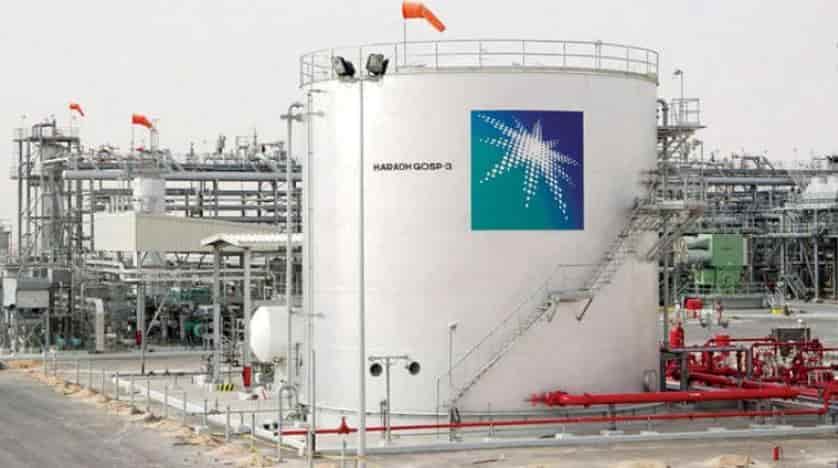
-Amcor opens China’s largest flexible packaging plant, strengthening its position in Asia Pacific
Amcor (NYSE: AMCR) (ASX: AMC), a global leader in responsible packaging solutions, today announced the opening of its new state-of-the-art manufacturing plant in Huizhou, China. With an investment of almost $100 million, the 590,000-square-foot plant is the largest flexible packaging plant by production capacity in China, further strengthening Amcor’s ability to meet growing customer demand throughout Asia Pacific.
The new facility is expected to employ more than 550 people, who will produce flexible packaging solutions for food and personal-care products. The plant comes equipped with the first automated packaging production line in China. This, along with high-speed printing presses, laminators, and bag-making machines, can deliver double-digit reductions in manufacturing cycle times. rPET-Bottle – Petrochemicals – Sorting
Amcor is also deploying the first smart production and operation system in the Chinese flexible packaging industry, which includes smart laser scanners, light curtains, high-standard machine guarding and multiple quality-control points. All key process equipment is also CE-certified to stringent European Union health, safety and environmental requirements. Other benefits of the new state-of-the-art facility are traceability throughout the production cycle, a climate-controlled production environment and low-carbon emission production.
“This investment is testament to our commitment to grow with our customers in China and throughout Asia Pacific by bringing the best of Amcor’s global expertise closer to them,” said Xin She, Vice President and General Manager of Amcor Greater China. “The world-class capabilities of our new plant are designed to enable us to exceed our customers’ expectations of quality, responsiveness and innovation.”
The plant features three labs with innovative testing and analytical capabilities to fully leverage the expertise from the recently opened Amcor Asia Pacific Innovation Center in Jiangyin, China, helping to accelerate the development of responsible packaging solutions. The new Huizhou site also includes a number of sustainability features, including the latest regenerative thermal oxidizers (RTO) system to reduce harmful emissions, as well as a number of energy-reduction, heat-recovery, low-power consumption and rainwater harvesting systems to help reduce its carbon footprint and environmental impact.
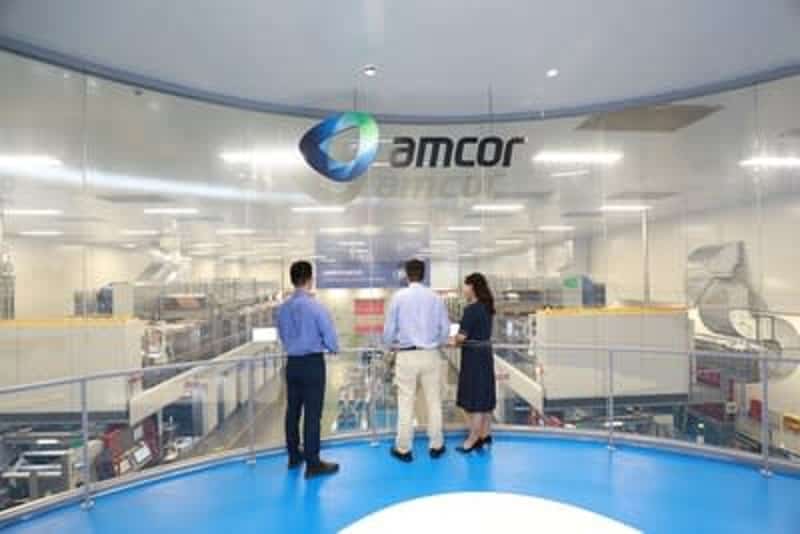
-US PET recycling rate posted modest increase in 2021
US PET recycling rate posted modest increase in 2021, said Recyclingtoday.
The U.S. recycling rate for postconsumer polyethylene terephthalate (PET) increased to 28.6% in 2021, up from 27.1% in 2020, while the North American rate (U.S., Canada and Mexico) increased to 36.8%, up from 34.2% in 2020, according to a report released by the National Association for PET Container Resources (NAPCOR), Charlotte, North Carolina.
NAPCOR notes a number of first-time achievements in its 2021 PET Recycling Report, including the largest amount of postconsumer PET ever collected, with PET bottle collection in the U.S. exceeding 1.9 billion pounds. Additionally, thermoforms collected for recycling in the U.S. and Canada reached 142 million pounds, setting a new record.
“These rates mark two major milestones in the growth of PET awareness, appreciation, use and reuse,” says Laura Stewart, NAPCOR executive director. “The 2021 increase is a powerful indicator that pandemic-driven disruptions to recycling services are getting back on track. rPET-Bottle – Petrochemicals – Sorting
It is also important to point out that the North American rate is over the 30 percent recycling threshold suggested by the Ellen McArthur Foundation. This is viewed by many industry pundits as the postconsumer benchmark for proving that recycling works in practice and scale across multiple regions representing at least 400 million inhabitants.”
“The rebound in the amount of PET bottles collected in 2021 is encouraging,” says Tom Busard, NAPCOR chairman and chief polymers and recycling officer for Plastipak Packaging Inc., Plymouth, Michigan, and president of Clean Tech, Plastipak’s recycling affiliate. “PET recycling is working, but there is a need to see increased collection to meet both legislated and voluntary recycled content demands of the future.”
Supporting the conclusion that COVID-19 disruptions to PET recycling have been overcome, NAPCOR points to these findings in its report: The volume of PET collected via deposit redemption systems, or bottle bills, increased by 46 percent compared with 2020. For the second consecutive year, more rPET was used in the Food/Beverage and Nonfood/Beverage Bottle categories, surpassing demand in the rPET fiber market in the U.S. and Canada.
Food/Beverage alone took the largest share of rPET consumption.
The U.S. rPET textile fiber industry faced higher prices and more competition for clear rPET in 2021 but still achieved total rPET fiber production of more than 1 billion pounds by sourcing greater volumes of colored rPET flake (57 percent) and greater volumes of postindustrial rPET flake (11 percent) relative to 2019.
Evidence points to a movement toward thermoformed tray-to-tray circularity, with 11 million pounds of PET thermoforms having been used by thermoform converters to produce more of this type of packaging. Also, a record 142 million pounds of PET thermoforms were collected for recycling, 73 percent of which were processed by PET reclaimers in the U.S. and Canada. rPET-Bottle – Petrochemicals – Sorting
We remind, ExxonMobil Corp., Irving, Texas, has announced plans to build its first large-scale postuse plastic advanced recycling facility in Baytown, Texas. The company says it expects to begin operations at the facility by the end of 2022.
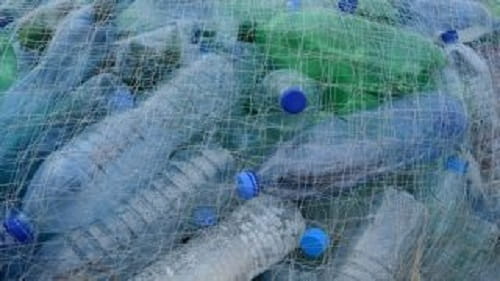
rPET-Bottle – Petrochemicals – Sorting
